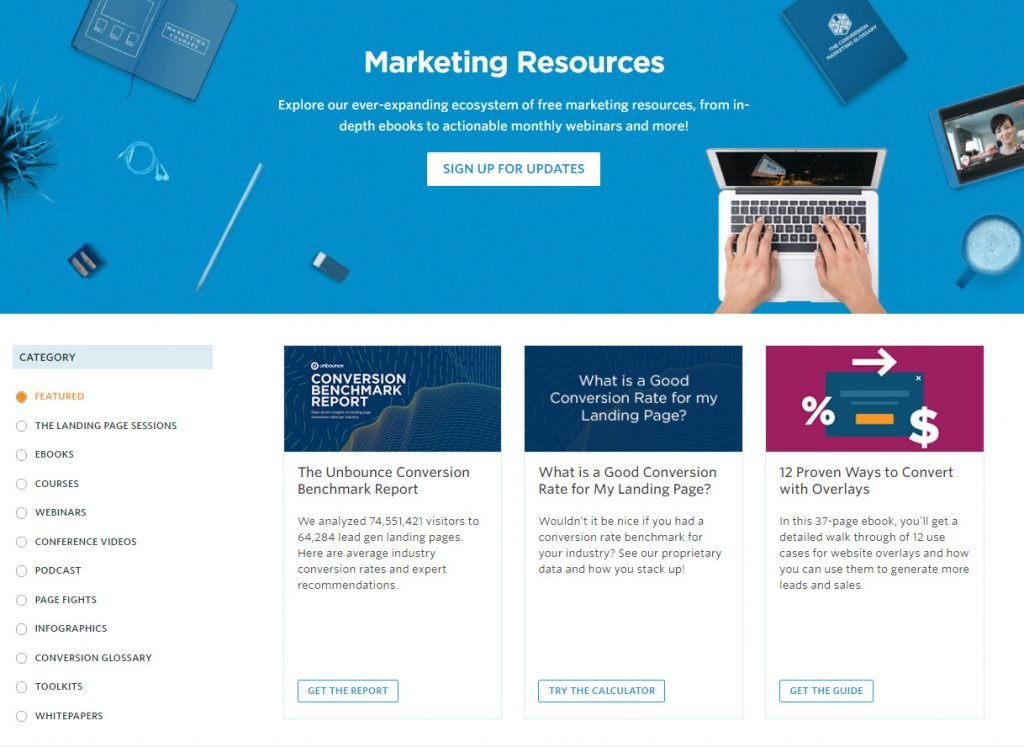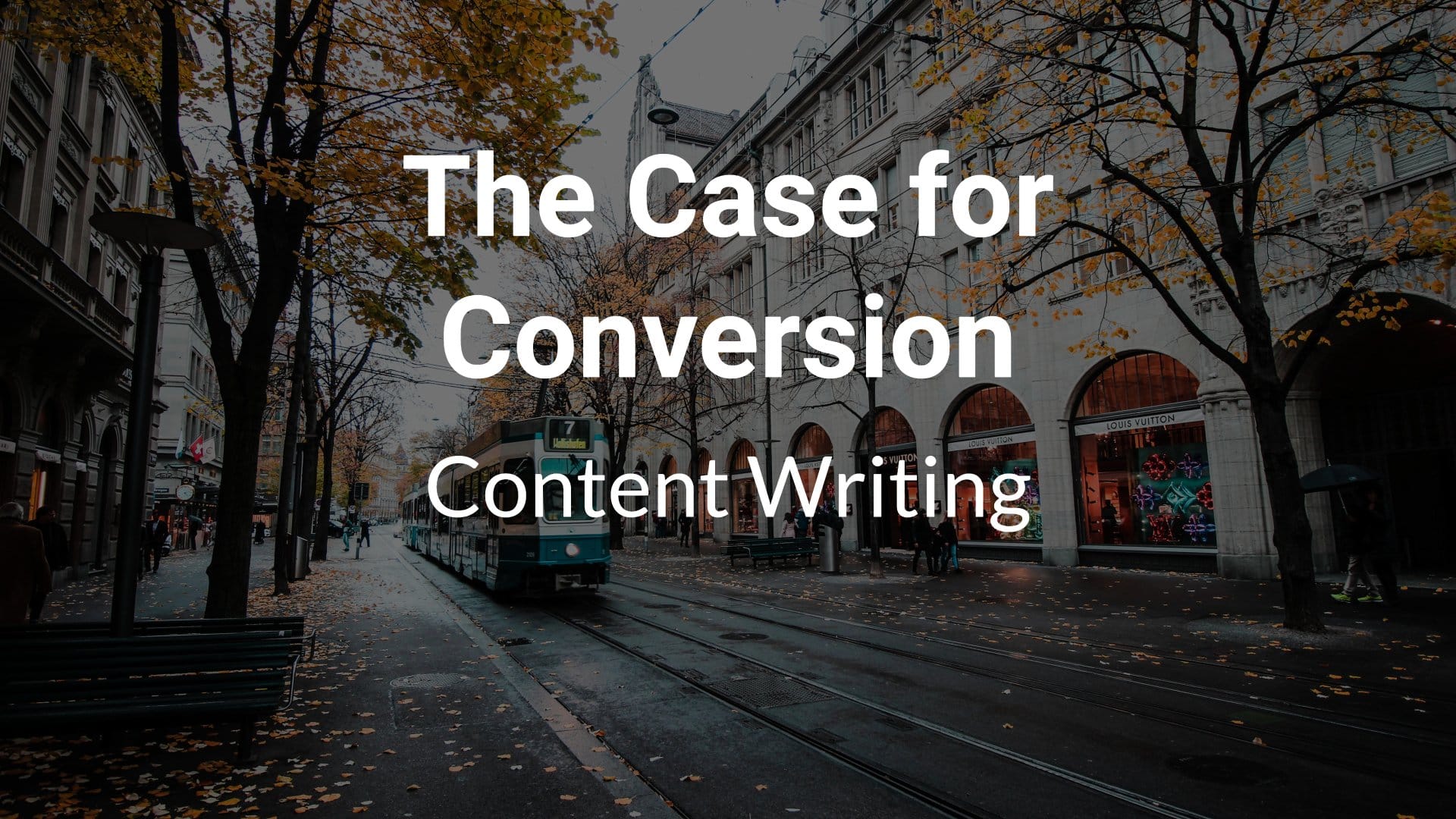As any reader of the HPC blog knows, I’m a huge proponent of Conversion Copywriting.
Heck, I’ve even been certified as a conversion copywriter by the original conversion copywriter herself, Joanna Wiebe of Copy Hackers fame.
So I know the importance of using words to persuade the reader to take a desired action.
There’s no doubt that copy is a critical element — if not the most critical element — on any sales or landing page. When it comes right down to it, copy is the engine of conversion.
But in the context of B2B — especially large and enterprise B2B — things play out a little differently.
In this space, the sales cycle is much longer. Prospects do their research, compare alternatives, and often consult with other stakeholders before they decide on a solution.
In the B2B space, conversion is a long game.
So how does a business nurture their prospects along the conversion path? How does a business stay top of mind through that long cycle while their prospects weigh their options and make a final decision?
By building a long-term relationship through valuable content.
In fact, I would argue that good content is critical to the ultimate conversion.
That’s why I’m in the Conversion Content Writing business.
The Road to Conversion
The concept of optimizing for conversion isn’t new.
Conversion Rate Optimization (CRO) emerged as a bona fide discipline with the advent of e-commerce (the term was only coined in 2007), but direct response marketing applied the same principles for decades before the world went digital.
At its most basic, optimizing for conversion means designing your marketing assets to increase the odds that your prospect will take the action you want them to take — and then measuring the results and iterating.
That effort can span a lot of areas. Webpage layout, visual elements … and of course, copy.
But there’s more to conversion than just getting a website visitor to click the “Buy” button on a sales page.
Now, don’t get me wrong — having the right elements in place and optimized for conversion on a landing page, for example, is absolutely critical.
But leaving that landing page to do all the heavy-lifting when it comes to converting your visitor to a paying customer? Well, that leaves a lot up to chance.
I believe that the conversion process — that leads to the moment when your prospect decides to give you their money — actually starts much earlier.
It starts with a relationship.
So … where does content fit in?
Content paves the path to conversion.
Content that’s relevant and that helps your audience solve a problem builds authority. It also builds trust — and trust builds relationships.
And relationships prime the pump for the sale.
Let’s take Unbounce as an example.
Unbounce provides a platform for marketers with few to no coding skills who need to build landing pages. But would someone with limited technical expertise be willing to sign up for a monthly subscription for such a product right out of the gate?
Likely not.
Unbounce provides a wealth of free resources to prospects, a lot of it centered on designing landing pages for conversion. Whether it’s an e-book on how to convert using overlays or a series of landing page teardowns, Unbounce has created an ecosystem of content for their audience that’s designed to help them.

And there’s no A-Z sequence here. The road to conversion through content doesn’t necessarily follow a straight line — there’s not always a fixed order that says “download this e-book, sign-up for a free trial, and convert to paying customer.” (As much as some sales-funnel experts may try to convince you otherwise.)
Relationships don’t work that way.
But while there may not be a straight line, there is still a path.
Every piece of content should serve a larger conversion goal.
This is the core of conversion content writing.
You decide what the conversion goal is — increased email subscribers, post shares, clicks through on a call-to-action link, phone calls, downloads, free trial sign-ups — and you write the content in a way that moves the reader to take that action.
How do you do this? By following conversion copywriting best-practices.
You research your target audience, learn their pain points and their language. You use proven frameworks and clear writing. You move the reader by connecting with them where they are.
Then, with every quality content asset that you deliver to your audience, you’re showing that you understand them. That you want to help them solve their problems.
You’re building a relationship.
Copy & Content: A Marriage Made in Heaven
Now, I’m not arguing against the importance of copy in the conversion process — not at all.
But my experience working with B2B companies has taught me that copy and content have to work together.
Think of it this way:
Copy is the information that people need to make a purchase decision — it’s direct and persuasive, and demands an action.
Content is the information that people need to know, trust, and like you. It’s a softer sell, and more indirect, but nonetheless persuasive. You’re not asking your prospect to buy from you — you’re inviting them into a conversation.
To use a romance analogy, content is the “dating” part of the relationship and copy is the marriage proposal.
That means, of course, that you have to be very clear about the purpose of your content, and the larger path it’s putting your reader on.
For example, a white paper that provides useful information to its audience (like this this one from Showcase Workshop) is also a sales enablement tool. It provides value, which helps build trust.

When you connect with your audience and engage them in conversation over time, they’re already comfortable with you by the time they’re making a purchase decision. The copy on your sales page just takes them across the finish line.
Your odds of success are much higher if your prospects feel like they already have a relationship with you — more importantly, they’re more likely to stick around.
Copy may lead to a sale, but content leads to a relationship.
Content for the (Conversion) Win
It’d be nice to think that someone could just land on your website, be bamboozled by your conversion-optimized sales page, and click “Buy Now”.
But we all know the real world doesn’t work that way.
You have to think of the larger buyer journey when you engage your prospects.
You need to nurture them, build a relationship with them, to increase the odds of their taking that final step and buying your products or services.
And how do you nurture them? With content. Content that helps them solve a problem and gently nudges them down a path toward ultimately choosing your solution.
It can be something as long as an e-book or as short as an infographic — but the goal is always the same. You want to help your audience now so that they’re predisposed to buy from you later.
And you can’t do that with a landing page or a Facebook ad.
Conversion starts with content. Don’t underestimate the power of content in your conversion strategy. It will make all the difference.
